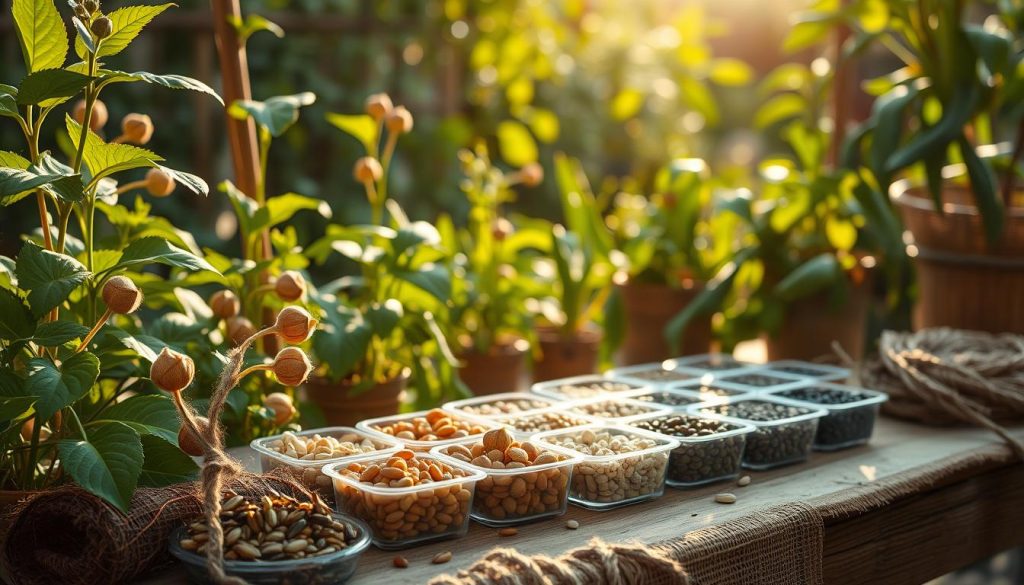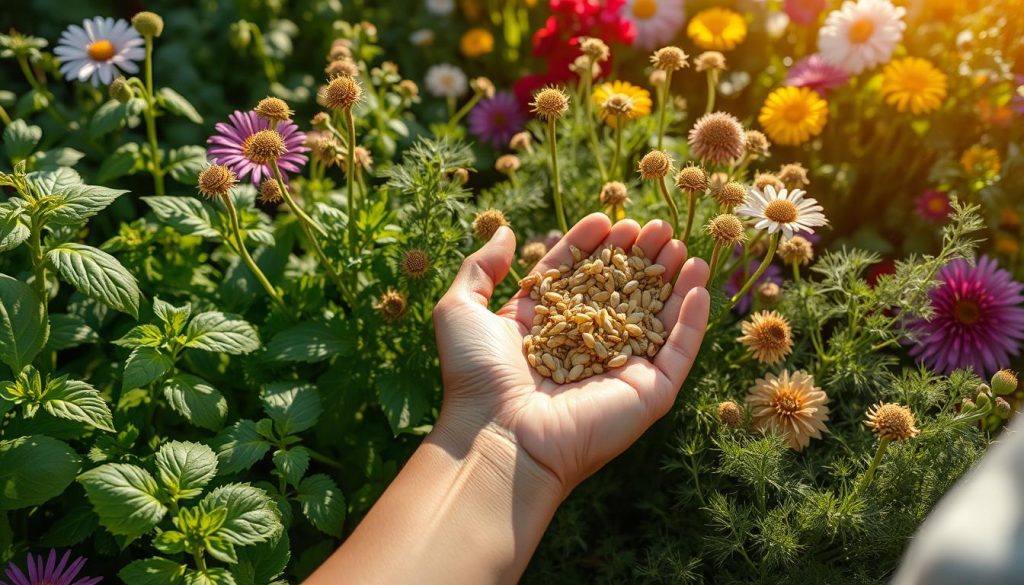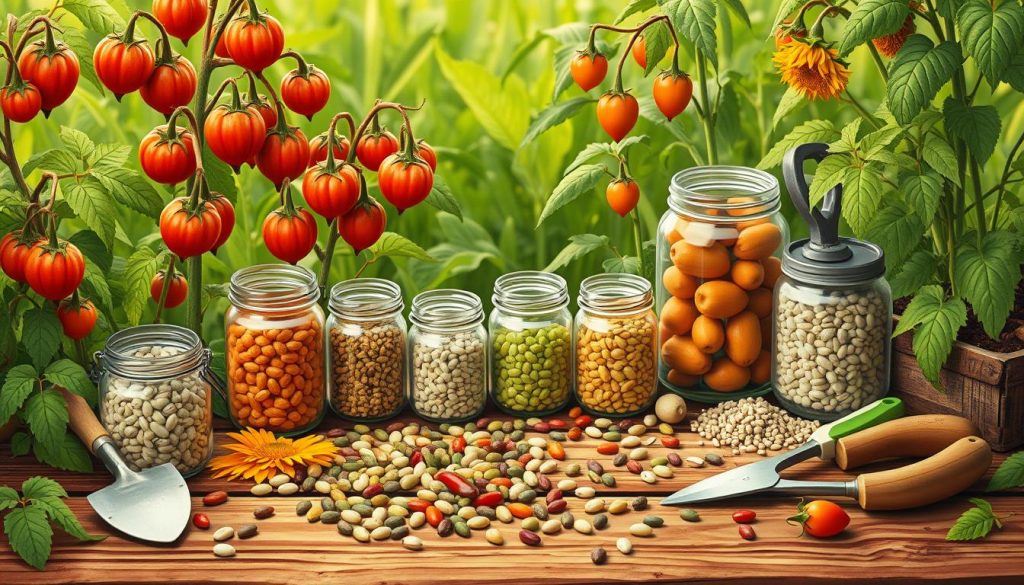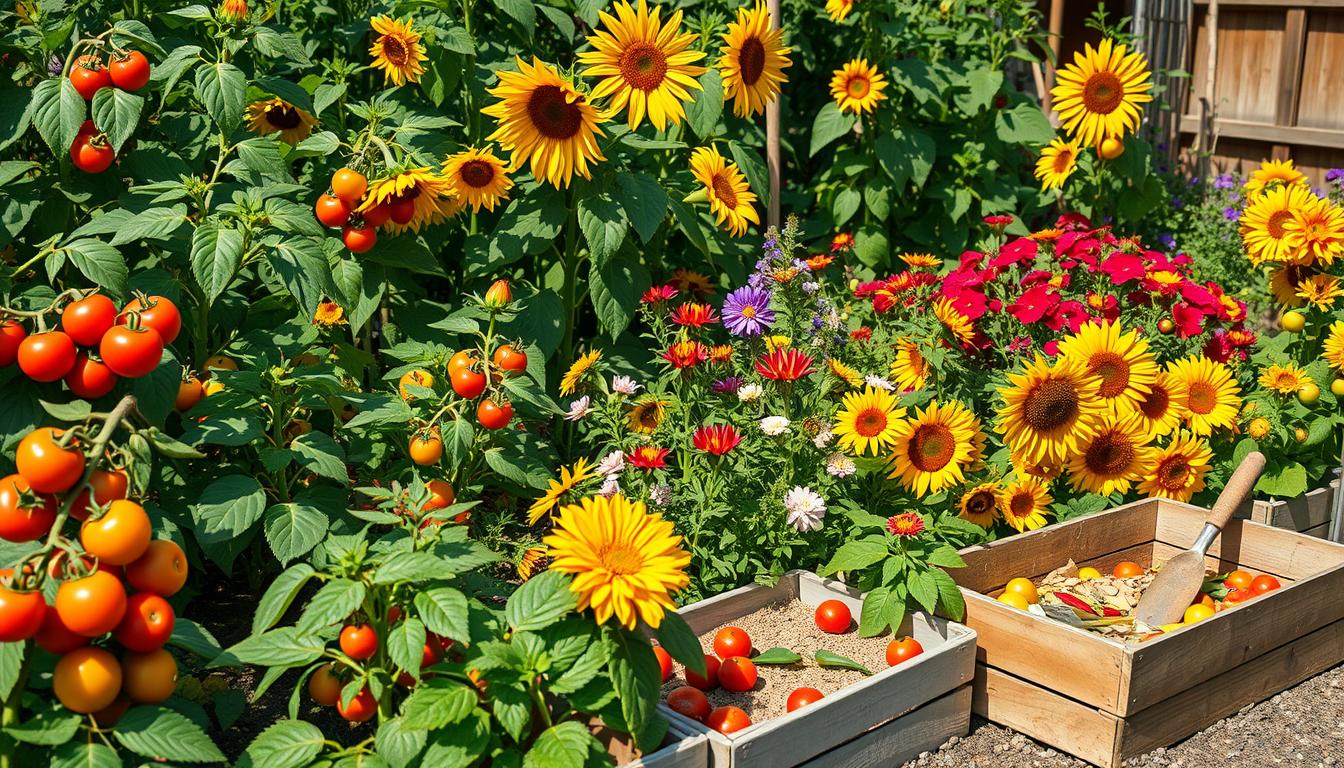I’m thrilled to share my gardening expertise with you. Saving seeds from plants is key for gardeners. It lets them keep their favorite varieties and cut down on buying seeds. I’ve picked plants that are easy to grow and great for beginners.
For saving seeds, start with vegetables, herbs, and flowers. Choose plants that fit your climate and growing space. Learning how to save seeds properly will help you harvest more and keep your favorite plants for years.
Why Seed Saving is Important
As a gardener, I’ve learned how crucial seed saving is. It helps us save biodiversity, supports sustainability, and lets us create unique plants. Saving seeds from our best crops means we can grow plants that do well in our area.
Seed saving also helps keep heritage varieties alive. We do this by picking and storing seeds from plants that can be saved. This way, we keep our plant species diverse and ensure they last for generations. Tomatoes, peppers, and beans are some of the top choices for seed saving.
- Promoting environmental stewardship by reducing our reliance on external seed sources
- Preserving the genetic diversity of plant species
- Developing unique and resilient plant varieties
Seed saving lets us connect with nature and help our planet. It’s great for both new and experienced gardeners. Adding seed saving to your gardening routine can make a big difference for the environment and your community.
Top Plants for Seed Saving
Many gardeners start with easy-to-grow plants for seed saving. Tomatoes, peppers, and beans are great choices. They produce lots of seeds and are easy to grow. Saving seeds from these plants helps you save money and keep your favorite varieties.
Some of the top plants for seed saving include:
- Tomatoes: A garden favorite, tomatoes are easy to grow and produce a high volume of seeds.
- Peppers: With their colorful and diverse varieties, peppers are a great choice for seed saving.
- Beans: Easy to grow and save, beans are a popular choice for gardeners of all levels.
Learning to save seeds is rewarding. It lets you share seeds with others and keep heirloom varieties alive. Seed saving is a way to connect with nature and improve your gardening skills.

Herbs That Are Great for Seed Saving
Exploring seed saving, I’ve found herbs are a treasure. They’re easy to grow and produce lots of seeds. This makes them perfect for saving. Herbs like basil, cilantro, and dill add fresh flavor to many dishes.
Herbs are a great starting point for saving seeds. They’re easy to care for and grow well in many conditions. Saving seeds from these herbs means you’ll always have fresh herbs on hand.
Benefits of Saving Herb Seeds
- Easy to grow and maintain
- High seed production
- Attractive to beneficial insects
- Can be used in a variety of dishes
Saving seeds from herbs like basil, cilantro, and dill is rewarding. You’ll have a steady supply of fresh herbs. Plus, you’ll preserve the unique traits of these plants. By choosing the right plants and following seed saving tips, you’ll enjoy the benefits for years.

How to Properly Save Seeds
To keep seeds healthy and ready to grow, it’s key to save them right. Timing is everything when it comes to saving seeds. I check the seed-saving plants list to know when to pick them.
After picking, clean and dry the seeds. This step gets rid of dirt and moisture. It keeps the seeds in top shape for later use. Important steps include:
- Harvest seeds at the right time to maintain their viability
- Clean and dry seeds to remove debris and moisture
- Store seeds in a cool, dry place to preserve their quality
By following these steps and using the right techniques, you can enjoy a big harvest. You’ll also have seeds ready for next year. 
Common Mistakes in Seed Saving
As I share my seed saving experiences, I want to warn you about common mistakes. These can lead to low-quality seeds and lower germination rates. By avoiding these errors, you can get the best seeds and enjoy more benefits.
Some common mistakes include saving seeds from hybrids and ignoring local climate conditions. Also, poor storage techniques can harm your seeds. To avoid these, use proper cleaning, drying, and storage methods. Keep your seeds in a cool, dry place.
Understanding Hybrid Seeds
Saving seeds from hybrids can be tricky. The seeds may not grow plants with the same traits as the parent. It’s better to save seeds from open-pollinated or heirloom varieties. These seeds will grow plants that are true to type.
Considering Local Climate Conditions
Ignoring your local climate can also affect seed quality. By understanding your area’s weather and soil, you can choose the best crops. This way, you can optimize your seed-saving techniques for better results.
- Choose varieties that are resistant to common pests and diseases in your area
- Plant seeds at the optimal time for your climate
- Use proper storage techniques to maintain seed viability
By being aware of these mistakes and avoiding them, you can improve your seed quality. This way, you can enjoy the many benefits of seed saving.
My Personal Experiences with Seed Saving
Seed saving has been a big part of my gardening life. I’ve grown many plants, like tomatoes, peppers, and beans. It’s helped me keep the special varieties I love.
Success Stories: My Favorite Varieties
I’m proud of saving a basil strain passed down in my family. Its scent and growth are unmatched. I also love growing cilantro and dill from saved seeds. They bring a lot of harvest and attract good bugs to my garden.
Lessons Learned Along the Way
Seed saving has its ups and downs. I learned not to save seeds from hybrid plants. They don’t always grow the same. I also learned to adjust my saving methods for my local weather. This keeps my seeds good for years.
Encouragement for New Seed Savers
If you’re new to seed saving, keep going! It connects you with nature and boosts your gardening pride. Start with something simple, like herbs, and see the joy it brings. Seed saving is a rewarding journey.

